A couple of years ago, I began writing some notes on the week’s hymns to help our congregation prepare for corporate worship. I’m going to give it another crack here. I hope you find these helpful.
This week’s sermon: Glorious Themes of the Reformation: Solus Christus
Hymn of Adoration and Praise:
- All Hail the Power of Jesus’s Name (#296)
- Text: Edward Perronet, 1779
- Stanza 6 and other textual alterations: John Rippon, 1787
- Tune: CORONATION by Oliver Holden, 1793

This is what you might call an open source hymn.
The text of the first stanza was originally published by “Rock of Ages” composer Augustus M. Toplady in his Gospel Magazine in 1779. One year later the same magazine published an eight stanza version of the hymn under the title, “On the Resurrection. The Lord is King.” These first two versions were both penned by Edward Perronet, by turns Anglican, Methodist revivalist, and Congregationalist, and long-time friend of the Wesley brothers.

The hymn was again printed in 1784 by George Burder, an engraver turned Congregationalist preacher (after a short stint with the Calvinist Methodists), who later became a big name in Christian publishing (most notably, the editor of Evangelical Magazine for a time). He included a four-stanza version of this hymn with some altered text in his Collection of Hymns by Various Authors. Burder gave it the name “The Coronation Hymn.”
In 1787, John Rippon, again altered the text, most notably the final stanza. Compare Perronet’s original—

“Let every tribe and every tongue
That bound creation’s call,
Now shout in universal song
The crowned Lord of all.”
with Rippon’s now familiar version:
“O that with yonder sacred throng
We at his feet may fall,
We’ll join the everlasting song,
And crown him Lord of all.”
This hymn has historically been set to three different tunes: MILES LANE (or SHRUBSOLE), DIADEM, and CORONATION. Of these three, the third, a sturdy march written specifically for the text, is by far the most popular.
This hymn is a bit of a stubborn mutt, passing through as many as three or four distinct protestant neighborhoods before landing on our Presbyterian doorstep. It seems to have insisted on its place in hymnody history. I like to think that that is perhaps due to the stubborn character of its original author. Prior to writing hymns, Perronet, the grandson of a French protestant refuge, wrote a book-length poem called The Mitre. John Julian, in his Dictionary of Hymnology, says this of Perronet’s work: “This strangely overlooked satire is priceless as a reflex of contemporary ecclesiastical opinion and sentiment. It is pungent, salted with wit, gleams with humour, hits off vividly the well-known celebrities in Church and State, and is well wrought in picked and packed words.” It also offended John Wesley to the point that Wesley called for its suppression. Even as Wesley did so, Perronet—this enigmatic self-proclaimed “true son” of the Church of England—joined the Wesley’s in their evangelical revivals. Perronet was known for his tenacious spirit. Consider this excerpt from John Wesley’s journal:
“From Rochdale went to Bolton, and soon found that the Rochdale lions were lambs in comparison with those of Bolton. Edward Perronet was thrown down and rolled in mud and mire. Stones were hurled and windows broken” (Tyerman’s Life and Times of the Rev. John Wesley, M.A., 3 vols., 1870 ; vol. ii. 57).
He was also known for ruffling John Wesley’s feathers more than once, and they eventually split over the distribution of the sacraments. Author and hymnologist Greg Scheer describes Perronet as “a sharp-tongued, difficult personality, who would rather pick a fight over theology than display brotherly love” (hymnary.org).
I must admit that I find it a bit refreshing to think that such a stately hymn of hope and promise came from the pen of a man as rough around the edges as Perronet. Likewise, the fact that this hymn enjoys so wide an ecumenical audience only serves to confirm that every sinner “whose love can ne’er forget the wormwood and the gall,” and “every kindred, every tribe on this terrestrial ball,” will indeed spread their trophies at his feet, as we, the “seed of Israel’s chosen race” will “join the everlasting song” and
Crown Him Lord of All!
Hymn of Response to the Assurance of Grace:
- Jesus Thou Joy of Loving Hearts (#646)
- Text: Bernard of Clairvaux (c. 1160)
- Translator: Ray Palmer (1858)
- Tune: QUEBEC by Henry Baker (1854)
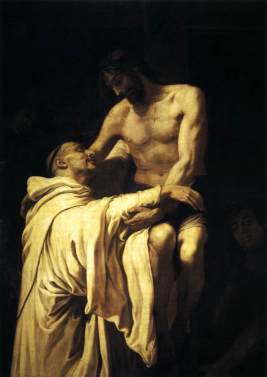
This hymn comes from a longer poetical work by Bernard of Clairvaux entitled Jesu dulcet memoria. Bernard, a nobleman by birth, gave up the comforts of the world for the robe and cell of monk. Despite—or perhaps because of—the austere life of the Cistercian, Bernard’s poetry abounds with the resplendence of Christ:
O Jesus, joy of loving hearts,
the fount of life, the light of all,
from fullest bliss that earth imparts
we turn unfilled to hear your call.
We taste you, ever-living Bread,
and long to feast upon you still;
we drink of you, the fountain-head,
our thirst to quench, our souls to fill.
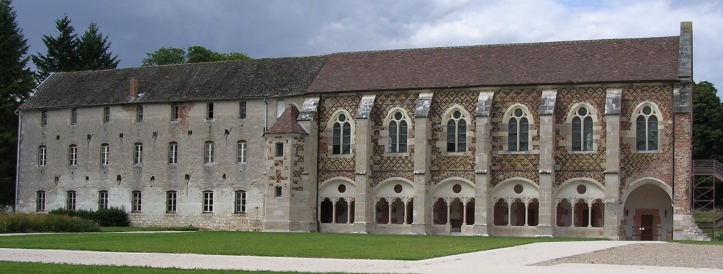
Verse four sounds the Augustinian echo “our hearts are restless until they find their rest in Thee”:
Our restless spirits yearn for you
where’er our changeful lot is cast;
glad when you smile on us anew,
blest that our faith can hold you fast.
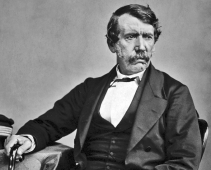
Dr. David Livingstone, renown Scottish pioneer medical missionary to Africa, records,
“That hymn of St. Bernard, on the name of Christ, although in what might be termed dog-Latin, pleases me: it rings in my ears as I wander across the wide, wide wilderness.”
Hymn during the Lord’s Supper:
- When I Survey the Wondrous Cross (#252)
- Text: Isaac Watts (1707)
- Tune: HAMBURG, Gregorian Chant arranged by Lowell Mason (1824)
In observing the depths to which congregational singing had sunk in his time, Isaac Watts commented, “The singing of God’s praise is the part of worship most closely related to Heaven; but its performance among us is the worst on earth.”
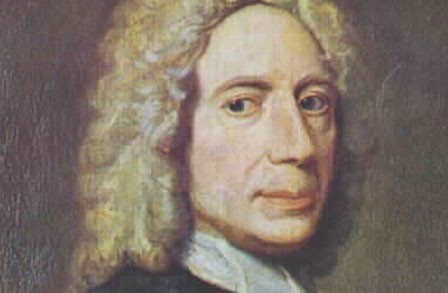
Watts was born in Southampton, England in 1674 while his father was serving time in prison for his non-conformist beliefs. He is known as the Father of English Hymnody, and theologian Matthew Arnold has called this hymn of Watts’s “the greatest hymn in the English language.”
Watts, however, is more than a hymn writer. His spiritual and literary influence has permeated culture well beyond the church. Consider this blurb from the publisher of the nations longest running literary journal, Poetry:
“Isaac Watts was a scion of seventeenth-century Independent Dissent, a religious culture distinguished by its attention to local congregational authority, the education of preachers and people, and the cultivation of individual piety. The politics, pedagogy, and piety of Independency are all in evidence in Watts’s early life and throughout his long career. He was at once a churchman, an educator, and an important minor poet. Watts’s poetry is, however, more than an expression of this particular religious culture. His writing, poetry and prose, was widely read and used for at least 150 years by believers and educators of all convictions in both Britain and America. Indeed Watts’s model of congregational song, the hymn, remains in current use throughout the English-speaking world. It is arguably the most lively vestige of the eighteenth-century understanding of what poetry can and ought to do.”
And the poetry of this hymn accomplishes much. As we sing it on Sunday, keep in mind the words of Paul in Galatians 6:14:
“But far be it from me to boast except in the cross of our Lord Jesus Christ, by which the world has been crucified to me, and I to the world.” (ESV)
Hymn of Thanksgiving:
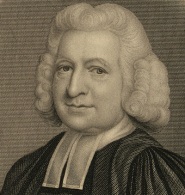
- Christ the Lord is Risen Today (#277)
- Text: Charles Wesley (1739)
- Tune: EASTER HYMN (or MONK) originally published in Lyrica Davidica (1708) and later altered by John Arnold (1749)
The bulletin note for this hymn at hymnary.org points out the liturgical effect of the present tense “is” of this hymn:
“In every worship service, the words we say and the actions we participate in are somehow shaping us. Perhaps without even being aware of it, worship is doing something to us – it’s forming habits and language inside of us to both teach us why we are in relationship with God, and how to be in relationship with God. One practice that many liturgists and hymn authors have brought into worship is describing an event that happened in the past (usually a moment from the Gospel story) as if it were happening today, in order to instill in us the understanding that, just as God worked in the lives of people two thousand years ago, He is still working today.
The hymn “Christ the Lord is Risen Today” is a perfect example of this. Right in the title is an indicator of the present tense: the word “is.” As we sing this song, we are first brought back two millennia as “witnesses” of the resurrection, and then we are also made aware that though the actual event of the resurrection happened once, it is in a sense an on-going event with ever-present effects. We are called today to live out of the resurrection, to follow our risen Lord in newness of life, and to ever lift our “alleluias” in praise.”
Those “alleluias” are all the more powerful for the musical melismas (i.e., multiple notes per syllable) that accompany them. The spoken word “alleluia” cannot compare to the praise that dances off our tongues as we sing the word to this heaven-rending melody.
Though this hymn is most often sung at Easter, it is a fitting hymn for the theme of this week’s service: solus Christus. May we leave the service this Sunday with this celebratory melody in our minds and on our lips, and the truth of the text in our hearts:
“Christ the Lord is ris’n today,” Alleluia!
sons of men and angels say; Alleluia!
raise your joys and triumphs high; Alleluia!
Sing ye heav’ns, and earth, reply. Alleluia!
Vain the stone, the watch, the seal; Alleluia!
Christ has burst the gates of hell: Alleluia!
death in vain forbids his rise; Alleluia!
Christ has opened paradise. Alleluia!
Lives again our glorious King; Alleluia!
where, O death, is now thy sting? Alleluia!
Once he died, our souls to save; Alleluia!
where thy victory, O grave? Alleluia!
Soar we now where Christ has led, Alleluia!
foll’wing our exalted Head; Alleluia!
made like him, like him we rise: Alleluia!
ours the cross, the grave, the skies. Alleluia!
Hail, the Lord of earth and heav’n! Alleluia!
Praise to thee by both be giv’n; Alleluia!
thee we greet triumphant now; Alleluia!
hail, the Resurrection, thou! Alleluia!

[…] the 12th century, Bernard of Clairvaux (or perhaps Arnulf of Louvain in the 13th, we don’t really know) wrote a poem […]